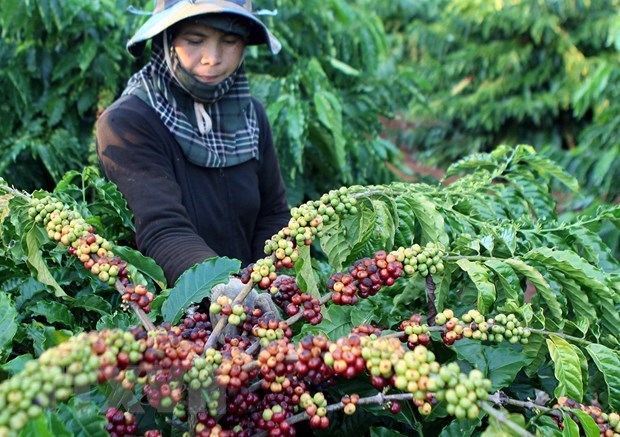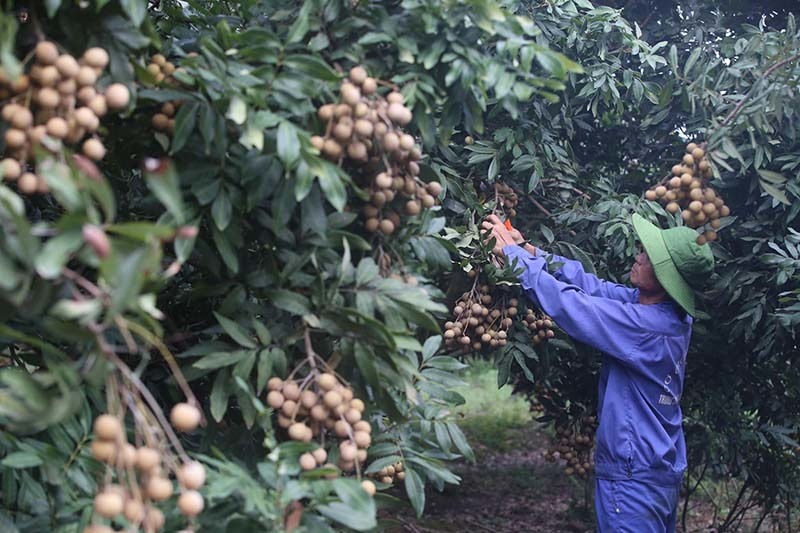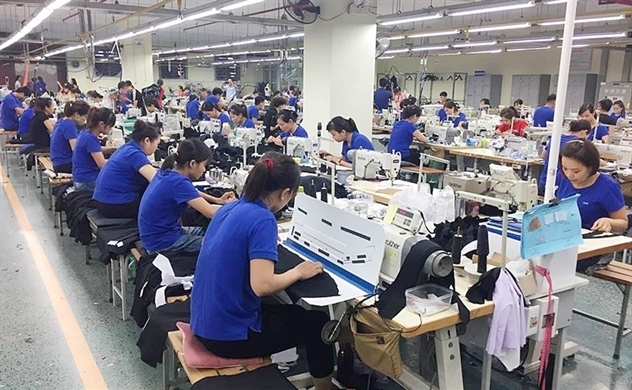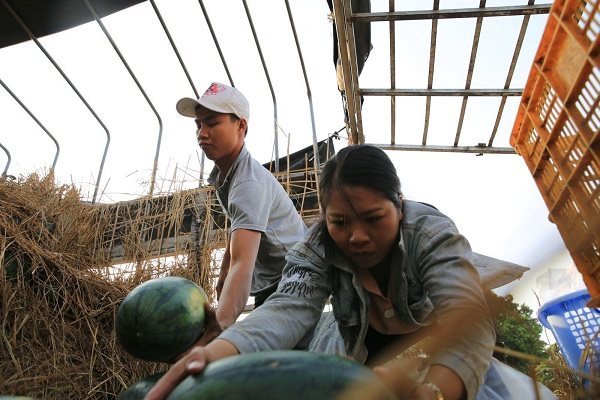- © Copyright of Vietnamnet Global.
- Tel: 024 3772 7988 Fax: (024) 37722734
- Email: [email protected]
chinese market
Update news chinese market
Over 1,600 Vietnamese products licensed for export to China
The General Administration of Customs of China (GACC) on February 11 morning issued 1,601 codes for Vietnamese agricultural and food products serving their exports to the Chinese market.
Vietnam ought to improve fruit quality for exports
The export value of vegetables and fruits reached at US$3.2 billion in 2020 and fruits account for 80 percent of export turnover.
Mango exports: Cambodia has become Vietnam’s rival in the Chinese market
Cambodia has obtained the go-ahead to export mangoes to China, becoming a new rival for Vietnam in the 1.4 billion consumer market.
China benefits the most from Vietnam’s trade surplus
Vietnam has joined many multilateral and bilateral trade agreements in recent years. The question is what the country receives from these trade relations.
Minister proposes export of passion fruit, sweet potato to China
Minister of Agriculture and Rural Development Nguyen Xuan Cuong has offered a variety of high-quality farm produce to China. He hopes Vietnam can boost exports through official ways to China in the time to come.
Farm produce deficiency in China offers opportunity for Vietnamese exports
Northern farmers have been advised to increase the winter crop growing area and increase exports to China, in anticipation of a farm produce shortage there caused by severe floods.
Fruit prices in traditional markets plummet as exports remain stuck
The loyal Chinese market has restricted the import of Vietnam’s fruits, while exports to the US are stuck because of Covid-19.
Even with EVFTA, Vietnamese fruit still relies on Chinese market
 Vietnamese fruit exporters have been trying to stop their reliance on China, but no progress has been made in finding new markets.
Vietnamese fruit exporters have been trying to stop their reliance on China, but no progress has been made in finding new markets.
China changes policy, buys Vietnam’s rice
 Previously, China imported rice in small quantities from Vietnam, but the country has recently increased imports from Vietnam and accepted higher prices.
Previously, China imported rice in small quantities from Vietnam, but the country has recently increased imports from Vietnam and accepted higher prices.
Where will FDI head after leaving China?
 Foreign investors are considering relocating their production bases out of China, and many of them are heading for Vietnam.
Foreign investors are considering relocating their production bases out of China, and many of them are heading for Vietnam.
VN Trade Ministry considers selling farm produce online to China
 The Ministry of Industry and Trade (MOIT), in an effort to rescue Vietnam’s farm produce, has decided to organize online trade between Vietnamese sellers and Chinese businesses.
The Ministry of Industry and Trade (MOIT), in an effort to rescue Vietnam’s farm produce, has decided to organize online trade between Vietnamese sellers and Chinese businesses.
Vietnamese enterprises add jobs as Chinese supplies to int'l buyers are interrupted
 International manufacturers are seeking component suppliers in Vietnam, considering Vietnam as an alternative market in the context of Covid-19 escalation.
International manufacturers are seeking component suppliers in Vietnam, considering Vietnam as an alternative market in the context of Covid-19 escalation.
Farm exports to EU and US stuck, Vietnam looks to China, ASEAN
 In order to export $42 billion worth of products as planned, exports to China need to grow by 10 percent and to ASEAN by 9 percent to offset the decline in exports to the US and EU.
In order to export $42 billion worth of products as planned, exports to China need to grow by 10 percent and to ASEAN by 9 percent to offset the decline in exports to the US and EU.
Exports suffer during Covid-19 crisis as orders are cancelled or delayed
 Some countries have temporarily closed shopping centers and asked people to stay at home to prevent the spread of coronavirus, which has affected exports of Vietnamese enterprises.
Some countries have temporarily closed shopping centers and asked people to stay at home to prevent the spread of coronavirus, which has affected exports of Vietnamese enterprises.
Catfish farming in danger, farmers leave ponds idle
 Catfish exports to China dropped by half in the first two months of the year in comparison with the same period last year, resulting in a 32 percent decrease in total export turnover for the entire seafood industry.
Catfish exports to China dropped by half in the first two months of the year in comparison with the same period last year, resulting in a 32 percent decrease in total export turnover for the entire seafood industry.
VN farm exports head for Chinese market again
 Signs of Vietnamese farm export recovery have appeared as the Chinese market has begun importing products again.
Signs of Vietnamese farm export recovery have appeared as the Chinese market has begun importing products again.
Is Vietnam’s ready-made food prepared for the Chinese market?
 The Covid-19 crisis, which has paralyzed many factories in China, offers an opportunity for Vietnam’s processed food to penetrate the 1.4 billion consumer market.
The Covid-19 crisis, which has paralyzed many factories in China, offers an opportunity for Vietnam’s processed food to penetrate the 1.4 billion consumer market.
Material supply from China resumes, VN textile-garment companies sigh with relief
 In mid-March, when Chinese factories began resuming operation, material supplies to Vietnamese textile and garment enterprises were restored.
In mid-March, when Chinese factories began resuming operation, material supplies to Vietnamese textile and garment enterprises were restored.
The ‘farm produce rescue’ method
 Some retailers have reportedto the Ministry of Industry and Trade (MOIT) that there is no more farm produce to rescue. But farmers still complain that their farm produce remains unsalable.
Some retailers have reportedto the Ministry of Industry and Trade (MOIT) that there is no more farm produce to rescue. But farmers still complain that their farm produce remains unsalable.
Business production hit because of lack of materials from China
 Vietnam's reliance on Chinese materials has been clearly exposed during the Covid-2019 crisis, as imports from China have declined.
Vietnam's reliance on Chinese materials has been clearly exposed during the Covid-2019 crisis, as imports from China have declined.



















